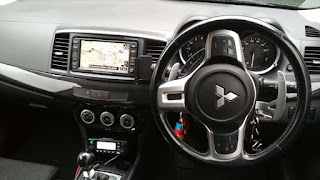Tuesday 28 November 2017
Friday 24 November 2017
Sunday 19 November 2017
Saturday 18 November 2017
Friday 17 November 2017
Back to Scouts on Friday to finish off the Communicators badges

We did Morse code and Phonetics, we also looked at various countries call signs, how radio's worked an some Q-Codes. Laptop was used to allow the Scouts to listen via WEBSDR to various stations and log their 25 contacts.


Simple Morse code buzzer made from a micro switch, buzzer and battery, cased in tobacco tin.
Parts available from Maplins and per typical Hams M6FLT and M0JFP built them on a Pub Table the night before.
Thursday 16 November 2017
Donate the RT90 DMR radio for charity
Happy to announce we raised some money for the local hospital and Ian was lucky winner of the RT90 DMR retevis radio
Wednesday 15 November 2017
Getting heard on the AMSAT ALL FOX leaderboard and seeing your data getting used
How to go about decoding telemetry from the FOX satellite (AO-85)
Fox Telemetry Decoder
The Fox Telemetry Decoder is being released to demodulate, store and analyze telemetry data from AMSAT’s Fox series of Cube Sats. We hope that you will also upload the telemetry you receive to the AMSAT server so that it can be used by other Amateur Scientists and our research partners, whose experiments fly with the Fox satellites.
FoxTelem is experimental. We are sure it can be improved. Please provide feedback and suggestions
Fox-1 satellites include two telemetry formats:
- Slow Speed, also called Data Under Voice (DUV) is 200 bps FSK data sent at the same time as the transponder audio. Whenever the transmitter is on, data is being sent. This happens during beacons and during live QSOs.
- High Speed is 9600 bps FSK sent instead of the transponder. This is used for data intensive experiments such as the Virginia Tech Camera and the University of Iowa HERCI experiment. This is only active when commanded from the ground. You can recognize High Speed because it sounds like an old school computer modem.
- FoxTelem will receive and store both formats assuming you can feed it audio that does not have the frequencies below 200 Hz filtered. For High Speed, the audio must also extend to include the full 9600bps bandwidth of the FM signal. For both modes this is best achieved from a Software Defined Radio or from the 9600 bps packet port of some radios. See the user guide for more details.
I used my FunCube Pro-Plus dongle, as the software will recognise it and tune it automatically.
You can opt to feed sound using a virtual cable from another SDR or radio of choice.
here are a few screen shots of what M0JFP was able to get from AO-85




Tuesday 14 November 2017
MISSION ZERO: M0JFP helps get Raspberry Pi code sent to ISS
Chertsey radio code club has submitted: https://trinket.io/python/9e5345d5cd
this simple piece of code displays the names of the children, displays a simple picture, displays the temperature and then another hot / cold picture.
Its heading tot he space station in December and will be run for 30 seconds in space.
Now that's fantastic!
Saturday 11 November 2017
Friday 10 November 2017
Thursday 9 November 2017
Tuesday 7 November 2017
Monday 6 November 2017
Saturday 4 November 2017
M6FLT/KG7VD. "Thrown together in 15 minutes" The LM386 audio amp. Ideal for soldering virgins total cost - £1

KG7VZD/M6FLT. The LM386 Audio amp being fed from the '49er CW Transciever. Bit of a pile up going on. 🙉 pic.twitter.com/DOFHukuLjs— MXO Radio Club (@chertseyRC) November 4, 2017
Friday 3 November 2017
Subscribe to:
Posts (Atom)
















































